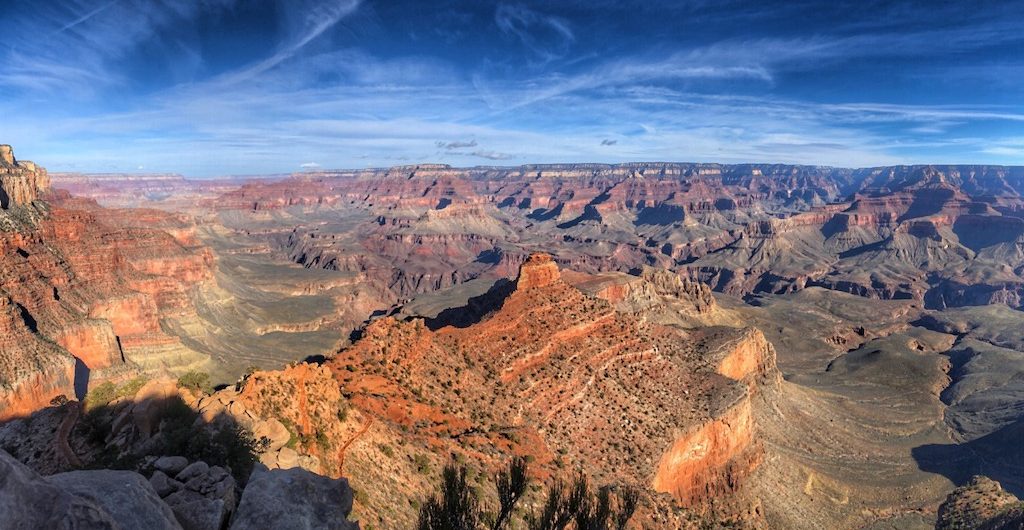Visiting Grand Canyon National Park should be on everyone’s bucket list! The sheer scale and beauty of the canyon is hard to fathom unless you actually see it in person. Pictures are great, but they are still just pictures.
Once our kids were a little older (6, 8, 10 years old), we started planning vacations to visit places that were far from home in order to expose them to more of this country than they might otherwise get to explore. We’ve managed to explore Colorado, Yellowstone and the Grand Tetons, Glacier National Park, and even Gulf Shores Alabama.
But this year was the big one – the Grand Canyon. If you are planning to visit Grand Canyon National Park, here are some tips that you should consider.
1. Consider visiting the Grand Canyon in the “off season.”
The South Rim (Grand Canyon Village and Desert View), the largest public area of the canyon, is open year round, though some services are not available in winter. The North Rim, however, is open from mid-May through mid-October, is much less crowded, but has fewer options for lodging, food, and accommodations.
We visited the Grand Canyon (South Rim) in early March. It was certainly busy, but much less crowded than during the traditional “family vacation” months of June through August. April & May are perhaps the ideal months to visit in terms of weather with September and October being excellent options as well. But if you don’t mind a little cold, March and November are also good months.
Whatever time of year you choose, be sure to check the weather forecasts and plan accordingly…which leads to the next tip.
2. Be prepared for the weather.
Depending on the time of year that you visit, it could be blazing hot, freezing cold, or both in the same day. At an elevation of around 7000 feet at the rim, mornings and evenings can be quite cool, but high temperatures in the middle of summer can be quite hot. At the bottom of the canyon, approximately 5000 feet below the rim, temperatures are much warmer and in the summer often exceed 100 degrees Fahrenheit.
No matter what time of year you visit, be sure to have plenty of water and protection from the sun. The arid climate and elevation will cause your body to lose more water than normal even if you aren’t sweating. In addition, the altitude (7000-8000 feet at the rim) means that the sun’s rays are more intense than at lower elevations and can cause sunburn more quickly even in winter.
Water, hats, sunglasses, and sunscreen are a must no matter when you are visiting. I highly recommend a lightweight, Grand Canyon multi-purpose bandana for sun and wind protection. It’ll make a great souvenir!
3. Start your days early.
Most tourists like to have a leisurely morning and take their time waking up, eating breakfast, and heading out for the day. When they do, they create large crowds and backed up traffic at fairly predictable times.
If you are staying inside the park, this isn’t as big of a problem, but if you are staying outside the park you can end up spending a long time in lines at the entrance stations and driving around looking for a place to park.
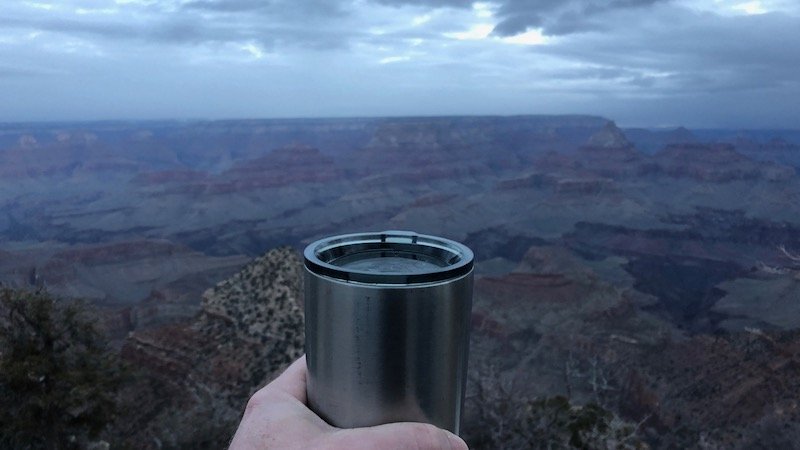
Get up early and get going! You are at the Grand Canyon for Pete’s sake!
I would recommend arriving at the entrance gate no later than 7am during the busier seasons. Be sure to have a plan for what you want to see and do that day as that will determine where you go and where you park…which leads to the next tip.
4. Use the Grand Canyon shuttle system.
There is an excellent free shuttle system that serves the main areas of the south rim. So arrive early, park your car, and walk or ride the shuttles. From the shuttle routes you can access many of the main trails and attractions. Take your time and enjoy the park without the hassle of fighting traffic.
5. Hiking the Grand Canyon is hard because you go down first.
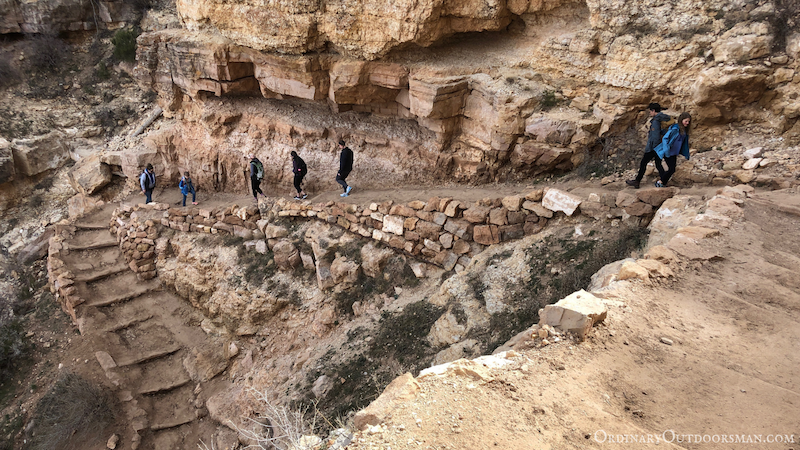
I grew up hiking in the Colorado mountains. Most of those hikes involved hiking up the mountain to the top of a peak or a beautiful hidden lake, and then you hiked back down. In other words, the hardest park of the hike was the first part when you were fresh and ready to go for the day, and the easiest part was coming back down when you were becoming tired and worn out.
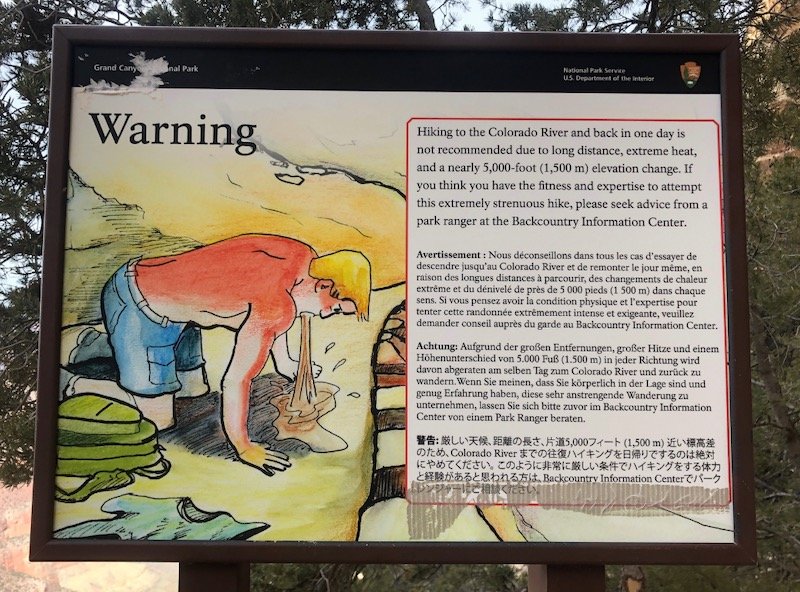
But in the Grand Canyon, you are hiking from the rim down to some point and then back up. It is the exact opposite of what I was used to. The last part of the hike was the hardest because you were coming back up the very steepest part of the trail at the end of your hike.
Take your time coming back up. Plan on it taking 2-3 times as long to come back up as it did to go down…maybe more if you aren’t in good shape. Bonus tip: get yourself a collapsible walking stick to bring with you.
- Anti shock/ shock, absorbing poles: With the high quality 6 series aluminum material, the shock-absorbing effect can str…
- Extra long eva foam handles with straps: Soft and comfortable, absorbs moisture from sweaty hands and very comfortable t…

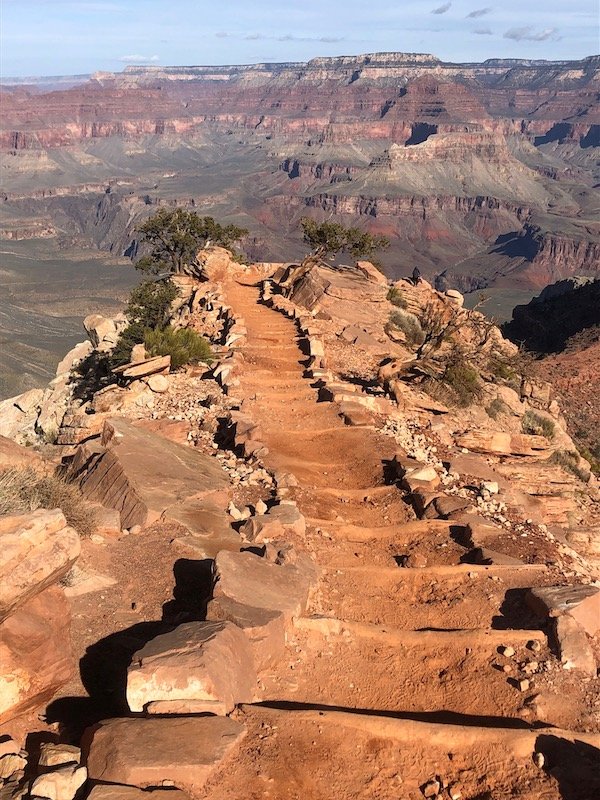
6. Make the effort to watch a sunrise, sunset, or both.
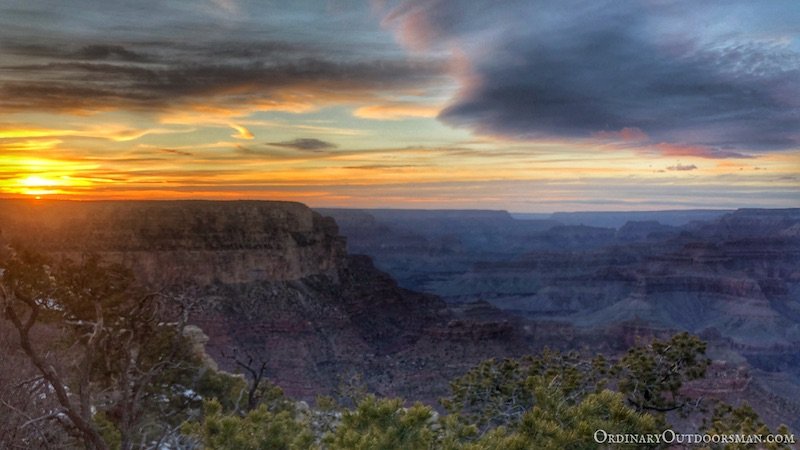
If you are going to go all the way down to the Grand Canyon, be sure take in a sunrise, a sunset, or both. As long as it isn’t cloudy, the two key times of day (known as the golden hours) light up the Grand Canyon and bring out the natural colors in ways that can’t be observed when the sun in higher in the sky.
So head out early one morning, fill your mug with coffee, and enjoy the beauty as the sun rises!

7. Gas up your car before you get to the Grand Canyon.
Once you are at the Grand Canyon south rim area, you won’t have a lot of options for gas. Be sure to stop well before you get close and top off. We payed $1.30 more per gallon when we gassed up in Tusayan when compared to some of the stations we passed an hour or so outside of the area. You may not be able to avoid gassing up during your stay, but you can hopefully save a little by gassing up farther away.
8. Save up money for the “extras”.
At a minimum, your costs will include lodging, food, souvenirs, and entrance fees. But there are many more options for you to consider during your visit.
While you are there consider a trail ride, flying over the canyon in a helicopter, walking on the skywalk, taking a Jeep tour, or even rafting down the river. These activities will give you and your family wonderful memories that will last a lifetime…but be ready to fork over considerable money in order to do so. If you are interested in any of these “extra” activities, be sure to research the cost ahead of time.
For full information, be sure to visit the park’s webpage.
